16
HSPA Evolution Outlook
Antti Toskala and Karri Ranta-aho
16.1 Introduction
This chapter presents the outlook of HSPA evolution to Release 12 and beyond. First the topics discussed in 3GPP regarding the HSPA-LTE interworking and regarding the 3GPP radio level interworking with WLAN are covered. Then, on-going studies for dealing with bandwidths smaller than 5 MHz are presented, followed by work on improving the Release 99 based dedicated channel operation. This chapter is concluded with a presentation of the work being done on uplink enhancements as well as addressing briefly the heterogeneous network aspects also being progressed in another ongoing Release 12 study item. It's worth noting that several items in this chapter represent work in progress and many of the issues mentioned may not be necessarily finalized on time, or included in the actual work items targeting finalization by the end of 2014. Thus, some of the items may end up being postponed for Release 13, with finalization scheduled to take place in March 2016. Typically 18 to 21 months is needed for a Release based on experience with recent 3GPP Releases.
16.2 HSPA-LTE and WLAN Interworking
The basic support for interworking between HSPA and LTE was introduced together with the first LTE Release, Release 8. This included the support for PS handover as well as necessary reselection for idle mode operation. Support for Single Radio Voice Call Continuity (SRVCC) was also included, which enabled Voice over LTE (VoLTE) [1] with ongoing PS voice calls to be moved to WCDMA/HSPA (or also to GSM if needed). Various optimization proposals were added later to reduce the additional delay introduced by the use of the CS fallback solution. Later in Release 11, support for reverse SRVCC (rSRVCC) was added too, which enables moving from a CS call in WCDMA/HSPA back to a VoLTE call in LTE.
As part of the Release 12 studies, proposals addressing the following areas have been made, as covered in [1]:
- Improvements for the load balancing, aiming to address limitations in the current signaling where only one eNodeB load information can be provided at a time for a given RNC.
- Improvements in mobility signaling in the case of a multistandard BTS, to investigate whether some of the steps could be optimized when it is known that both HSPA and LTE are provided by the same base station.
Besides interworking with HSPA, 3GPP has also been addressing the interworking between 3GPP radio and WLAN networks. In 3GPP radio specifications, there has been no work done so far with the radio level interworking between 3GPP radios (LTE and WCDMA) and Wireless LAN (WLAN) networks. The key issue to address is how to ensure quality of service is retained when moving from a 3GPP network to WLAN network. Currently, if a UE moves from a 3GPP network to WLAN, the resulting quality may be much worse than that provided by a HSPA or LTE network due, for example, to limitations in the backhaul with WLAN or for general load reasons. While at the moment there are no defined measures in RAN for how to fix the situation, such methods are not being specified in 3GPP.
The three different approaches originally considered were, as given in [2]:
- An Automatic Network Domain Selection Function (ANDSF) based solution, which would aim to extend the core network-based ANDSF solution. It has been suggested that a pure ANDSF solution for providing the policies for the UE could not address the dynamic situation on the radio side as ANDSF signaling comes from the core network side. ANDSF was addressed in more detail in Chapter 7.
- The second approach considered is to provide in the RAN side (RRC) signaling offloading rules including the WLAN Traffic Steering Indicator (WTSI). WTSI would indicate whether to steer traffic to WLAN or whether to stay with 3GPP RAN instead. RAN side signaling could provide the list of radio bearers to be offloaded (unless provided via ANDSF). The general principle is a UE receiving guidance from the RAN side on which access points (WLAN SSID) to consider for offloading. Additionally, further information could be provided to help with the selection, such as what the signal strength in the 3GPP RAN network side should be, with the following quality measures to be considered: HSPA CPICH Ec/No and CPICH Received Signal Code Power (RSCP) or on the LTE side the Reference Signal Received Power (RSRP) or Reference Signal Received Quality (RSRQ) as presented in [3]. This approach was chosen as the basis for Release 12 RAN solution.
- The offloading from 3GPP RAN to WLAN could be done based on the dedicated traffic steering commands from RAN. The commands could be derived UE measurements based on WLAN network quality and load. Such an approach with UE measurements and reporting is rather similar to radio handover type operations inside 3GPP RAN. Such an approach has the greatest complexity impact on the network, especially if the RNC area has a large number of WLAN access points which would need to be controlled by RNC.
3GPP has already decided that there will not be, for example, an interface specified between WLAN AP and HSPA NodeB or RNC. Especially for an RNC it would not be desirable to interface with a large number of access points, when considering a large HSPA network with hundreds of macro cells belonging to a single RNC area.
16.3 Scalable Bandwidth UMTS
As part of the Release 12 studies, addressing smaller bandwidths than 5 MHz was investigated. As discussed in [4] already, somewhat smaller bandwidths have been enabled in the field with the GSM refarming case particularly, where tighter filtering was used to go down to the 3.8 to 4.2 MHz range when deploying WCDMA in the middle of the GSM carriers of the same operator, as addressed also in Chapter 11. Now the desire is to go down to half of the nominal bandwidth, to 2.5 MHz or even lower in some cases.
During the study, as reported in [5], two alternatives for Scalable Bandwidth UMTS (S-UMTS) emerged, as illustrated in Figure 16.2, for how to address bandwidths clearly below 5 MHz:
-
Smaller chip rate, also called Time-Dilated UMTS, where a divider N would be used so that with N = 2 or N = 4 the resulting chip rates would be 1.92 Mcps or even down to 0.96 Mcps.
- Filtered UMTS, where the actual chip rate would remain at 3.84 Mcps, but the transmit (and receive) filter would be narrower than 3.84 Mhz, for example a 2.5 MHz filter instead of the 5 MHz filter could be used to fit the 3.84 Mcps S-UMTS carrier to a 2.5 MHz chunk of spectrum. The transmitted digital waveform could also be further optimized to reduce the impact of tight filtering.
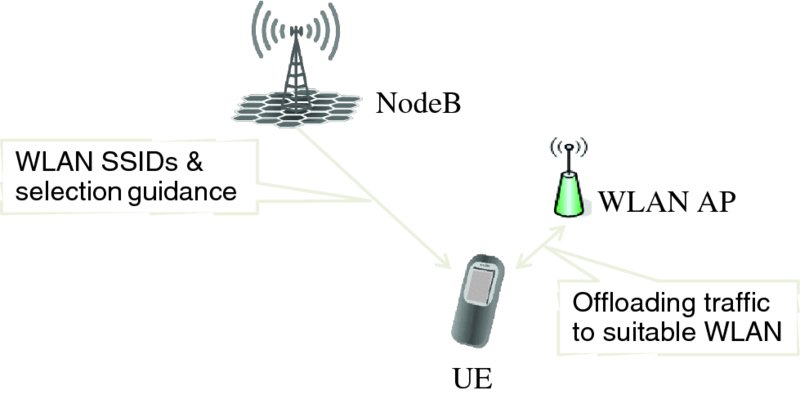
Figure 16.1 Radio level interworking between HSPA NodeB and WLAN AP
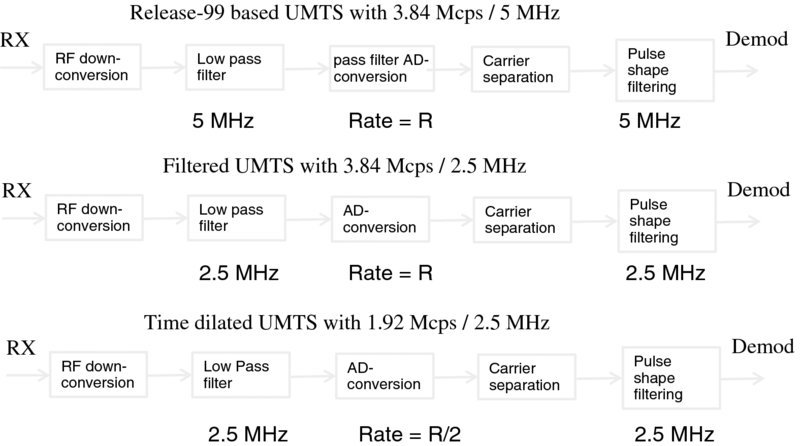
Figure 16.2 Impacts on the sampling rates and filter bandwidths with different S-UMTS approaches
The use of S-UMTS results naturally in smaller data rates than regular 5 MHz UMTS. Also, if the solution is to implement the S-UMTS with a Time-Dilated UMTS approach with longer chip duration and respectively longer TTI, this would result in longer latency both for the user plane and control plane data. Using a 2.5 MHz filter on an unmodified 3.84 Mcps signal with filtered UMTS was shown to have some spectral efficiency degradation on low-to-moderate data rates, and a significant reduction in spectral efficiency for higher data rates. Another approach developed during the study to address the resulting performance issues with filtered UMTS (especially for downlink with high geometries) was using chip-zeroing to reduce the impact of filtering, as shown in Figure 16.3.

Figure 16.3 Chip-zeroing with filtered UMTS
From the performance point of view, the use of smaller bandwidth causes some performance loss as, for example, some of the multipath diversity benefits with 3.84 Mcps are lost, resulting in more sensitivity to frequency selective fading. Figure 16.4 shows the example performance with scalable bandwidth UMTS, with the smaller bandwidth created by a filtering or a filtering and chip-zeroing approach, showing that the use of chip-zeroing reduces the performance degradation compared to the pure filtering solution. As shown in Figure 16.4, the performance with smaller data rates is retained rather well while more degradation can be seen with higher data rates. The results in Figure 16.4 are based on approaches which retain, for example, the TTI length unchanged and do not create additional delay to the data or control signaling. If the approach is based on the time-dilated solution, the extra delay will cause further system-level issues, for example the mobility events are slower due to the longer round trip-time for signaling as well as impacts on the time needed to obtain and transmit the necessary measurements.

Figure 16.4 Performance of scalable bandwidth UMTS of 2.5 MHz bandwidth compared to Release 11 UMTS with 5 MHz bandwidth
3GPP concluded the scalable bandwidth UMTS study at the end of 2013 and agreed to perform further studies on such an option that downlink is based on filtered UMTS with chip-zeroing, with every second chip being then zeroed. In the uplink, sufficient performance for widest use could be reached with a pure filtering based approach as well. Using the chip-zeroing in the downlink is important as otherwise with high geometry values (i.e., close to the base station) there would be greater degradation, especially with data rates in the order of 500 kbps or more. 3GPP ended up not agreeing to include scalable bandwidth UMTS in Release 12.
16.4 DCH Enhancements
Regardless of the fact that HSPA-based radio supports efficient delivery of both packet- and circuit-switched voice, voice traffic is still typically operated using a circuit-switched core network and a Dedicated Channel (DCH) on the UMTS radio network. DCH channels were designed as circuit-switched radio connections capable of simultaneous voice and data services in the very first release of the UMTS radio, Release 99, and were never further optimized when future development became focused on the more efficient packet-access radio. Because of this, there was interest in looking at optimizing the DCH radio specifically for voice delivery and exploiting similar techniques defined for HSPA radio, including DTX/DRX operation, in order to reduce UE power consumption and save on control channel overhead – as well as a variant of HARQ exploiting the varying link quality. With HSDPA, the use of CPC, as introduced in Chapter 4, allows for any service basically to implement DTX/DRX operation saving power and improving system capacity.
The DCH enhancements that were considered in 3GPP included the following: [6]
- Uplink frame early termination and ACK for early termination.
- UL DPCCH slot format optimization.
- Downlink frame early termination and ACK for early termination and shorter TTI.
- DL DPCCH slot format optimization.
- DPCH Time Domain Multiplexing (TDM), which was eventually not included in the specifications.
A typical Release 99 operating point for voice service is 1% FER, meaning that 99% of the voice frames need to decode correctly after all the bits in the 20-ms TTI have been delivered. Statistically this means that many packets would be correctly decodable even before all the bits in the 20 ms were transmitted, and the remainder of the bits are transmitted for nothing.
An example of the enhancement in the uplink operation compared to Release 99 is shown in Figure 16.5. The NodeB receiver tries to decode the packet before the frame (or the 20-ms interleaving period) has ended. The receiver may try decoding at different instances to get correct decoding (with a CRC check giving the correct result) and then sending ACK message as early as possible to allow the UE transmitter to stop transmitting the rest of the frame (or interleaving period in general). The earlier the NodeB manages to inform the UE of the successful uplink frame decoding, the bigger the benefit and the more DTX can be applied. In comparison, if one would use HSUPA with a 2-ms frame size to carry the voice data, then 2-ms transmission time would be sufficient if the first transmission was successful.
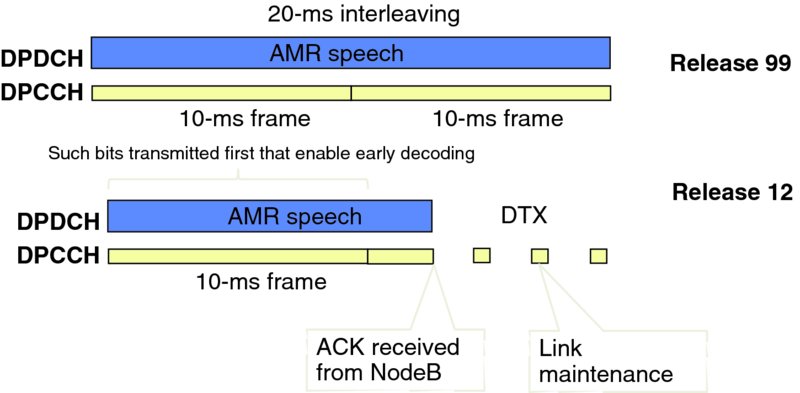
Figure 16.5 Example of uplink DCH early termination
In order to drive for a higher probability of the voice frame being decodable earlier, all the bits could be encoded to a 10-ms radio frame, and repeated in the second 10-ms radio frame up to the point when the decoding is successful. Further, the outer loop power control could target a more aggressive operating point, for example, 10–20% FER after 10 ms rather than 1% FER after 20 ms. This would give the OLPC more frame erasures for faster adaptation to link quality changes and allow for on average much earlier frame early termination.
The market interest in further enhancing DCH voice capability remains to be seen. While voice currently continues to be provided as CS voice with the WCDMA/HSPA network over the Release 99 based DCH, the additional deployments of VoIP (with Voice over LTE, VoLTE) are pushing the introduction of VoIP for HSPA as well, once the IMS investment for VoLTE is already made due to LTE. When all IP services are run over HSPA, it is foreseen that VoIP will also run on HSPA. In that case all the elements are there to operate CS voice on HSPA too (CSoHSPA) (see Chapter 7). If the introduction speed of VoIP remains slow enough in the marketplace, there may be interest to still optimize the CS voice service separately based on Release 12 to reduce especially the UE power consumption.
If the key drivers to DCH enhancements are considered to be:
- increased voice capacity and
- interference reduction.
then these are both already achieved with HSPA using earlier 3GPP Releases with CSoHSPA (when no further investment to the core network is made) or Voice Over HSPA (VoHSPA) when IMS is available for PS voice support.
In the domain of code resource utilization, the use of DCH enhancement – based on the new physical layer structure planned for Release 12 at the end of 2014 – does not free any additional code resources. Some of the downlink power could be used for HSDPA instead, if the transmission is stopped early enough, but services mapped on HSDPA are of course sharing the code and power resource in a more dynamic and coordinated way as resources are only booked for 2 ms at a time with a fixed booking period.
16.5 HSUPA Enhancements
Study on further Enhanced Uplink (EUL) enhancements aims to improve the uplink performance after many rounds of improvements have focused on the downlink improvements. The uplink changes prior to Release 12 are
- Release 6: Introduction of HSUPA
- Release 7:
- higher order modulation for HSUPA (16QAM)
- HSUPA DTX/DRX (CPC)
- CQI rate reduction (CPC)
- E-DPDCH gain factor interpolation for more accurate power to data rate adaptation
- E-DPCCH boosting for better channel estimation
- CS voice over HSDPA and HSUPA.
- Release 8: Enhanced Cell_FACH uplink (random access over HSUPA)
- Release 9: DC-HSUPA
- Release 11:
- uplink beamforming
- higher order modulation for HSUPA (64QAM)
- uplink 2 × 2 MIMO for HSUPA
- further Cell_FACH enhancements for uplink.
The following solutions have been considered in the study [7]:
- Handling more efficiently the situation with multiple uplink carriers, for example enabling faster switching between carriers for better load balancing when UEs are supporting multicarrier operation in the downlink direction only. Another approach is to aim to have higher Rise over Thermal (RoT) that is, increased uplink interference level operation (such as with the use of 16QAM) on one of the carriers while using another carrier for “regular” RoT operation to ensure the uplink range of cell edge users is not reduced, as shown in Figure 16.6.
- Improvements in the control signaling for better grant handling, facilitating efficient time domain multiplexing to more efficient dealing with bursty data, as well as enabling more efficient high RoT operation with the new carrier type of operation in uplink, and/or with decoupling the uplink transmit power from the used data rate. Also, better access control has been proposed to deal more efficiently with the overload situation.
- Another dimension for enhancing the uplink is considering data compression in the radio layer. For example, encoded video does not compress as it has been already compressed at the original encoder. However, a regular image file or document could be compressed, but attempting to compress a stream that does not get any smaller causes additional processing and memory requirements. In the worst case, trying to compress a stream subject to compression earlier could lead to actually increasing the amount of data needed to be transmitted over the air. On the signaling side, the idea has been to reduce signaling overheads with uplink control signaling, specifically looking at the overhead generated by E-DPCCH and HS-DPCCH.
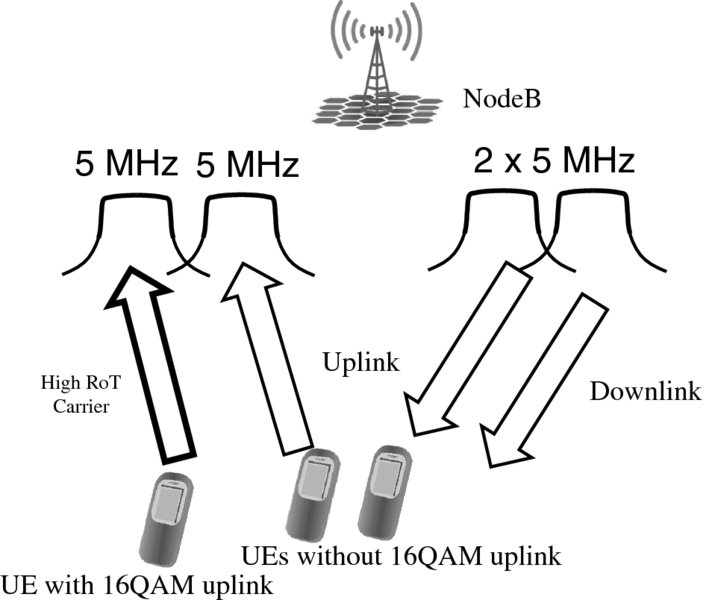
Figure 16.6 Use of specific carrier for higher RoT with 16QAM
3GPP is foreseen to start in early 2014 the specification work for the method selected based on the study conclusions in [6].
16.6 Heterogenous Networks
The use of HSPA with heterogeneous networks was studied already in Chapter 7. Release 12 work has looked at further potential enhancements for different scenarios, including both co-channel and dedicated frequency cases, as illustrated in Figure 16.7. Clearly, the existing HSPA deployments have shown that there are no fundamental problems preventing the use of heterogeneous networks with HSPA, but some further optimization could be considered. The study conducted in 3GPP [8] in the area of HSPA heterogeneous networks includes several smaller items, including the following:
- In some cases a mismatch between uplink and downlink can be observed. In order to deal with such a case more efficiently, one could consider solutions such as enhanced quality of pilots in the uplink or boosting the existing channels to compensate for the imbalance, or consider dynamic desensitization of the small cell uplink to compensate for the uplink/downlink imbalance due to smaller downlink transmit power of the small cell, in addition to more traditionally used static desensitization.
- Decoupling the E-DCH scheduling from HSDPA scheduling has been considered to address the mismatch between uplink and downlink as well. With E-DCH decoupling the uplink scheduling grants could be controlled by the small cell with the dominant uplink path to the UE, while the HSDPA data would be transmitted by the macro cell with the dominant downlink path to the UE. In this case the grants could come directly from the small NodeB or via RNC and macro cell.
- With the Network Assisted Interference Cancellation (NAIC), the NAIC-capable UE would get signaling of the parameters used in the interfering cell as well, as discussed in Chapter 8 also and shown in Figure 16.8. The signaling could be explicit, giving details such as modulation, block size, and channelization codes being used; or implicit by providing only the H-RNTI of the UE being scheduled and the UE would decode the HS-SCCH from the interfering cell as well enabling decoding of the interfering signal (post-decoding cancellation), or alternatively a subset of the signaling, for example, used modulation and/or codes could be signaled for more efficient interference suppression (pre-decoding cancellation). As the scheduling is NodeB functionality, there is no need to obtain the relevant information from RNC but rather there should be relatively fast connectivity between the NodeBs involved in NAIC operation, or the information related to the interference is signaled directly over-the-air by the interfering cell to the UE.
- One further approach is the combined cell with multiple spatially separate but synchronized transmitters seen as a single cell by the UE. New antenna-specific pilots to enable capacity that would be comparable to deploying independent cells would be needed, and unfortunately this also requires new UEs as legacy UEs could not benefit from the situation, but the additional pilot overhead would reduce capacity and generate interference to the legacy UE base.
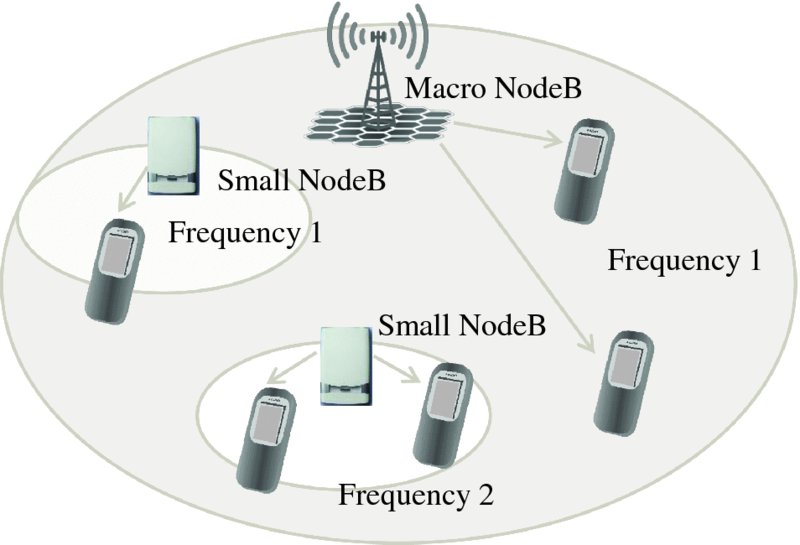
Figure 16.7 3GPP co-channel and dedicated frequency UMTS HetNet scenarios
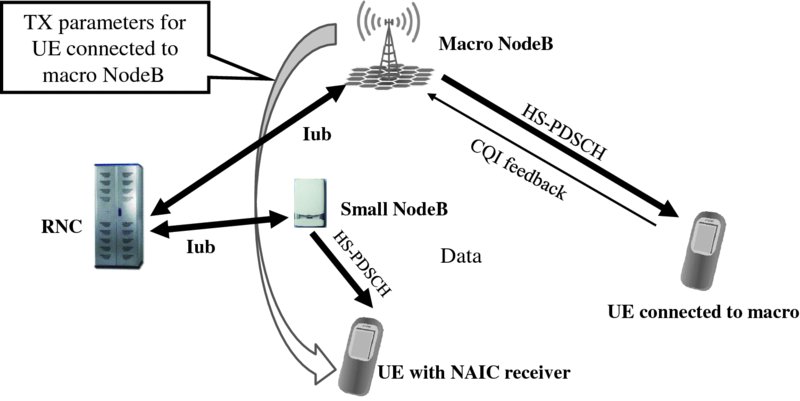
Figure 16.8 NAIC principle for explicit signaling of transmission parameters for another UE
16.7 Other Areas of Improvement for Release 12 and Beyond
For Release 12, there are also some additional issues that have been raised, such as whether the Broadcast Channel (BCH) structure is sufficient and whether the new features (in Release 12 and beyond) would be needed due to BCH capacity limitations. The proposed approach would rely on the new information elements in the System Information Blocks (SIBs) being transmitted on a parallel BCH to the legacy one, possibly using HSDPA instead of the existing BCH. Alternatively a second Release 99 style BCH could be added. This allows higher capacity than the current BCH, but is only usable with Release 12 and newer devices, thus the amount of information that could be transmitted via such BCH is limited. The use of HSPA for BCH delivery is similar to the LTE broadcast principle, where only the Master Information Block is on a separate broadcast channel but the SIBs are on the data channel (equivalent to HSDPA), as covered in [9]. Further details of the enhanced broadcast of system information are covered in [10]. Other smaller areas include investigation for possible further enhancements for home BTS (femto BTS) related mobility, though the practical interest seems limited for solutions not valid for legacy UEs in Release 11 or earlier Releases.
16.8 Conclusions
In this chapter we have looked at the evolution of HSPA for Release 12 and beyond. Release 12, expected to be finalized by the end of 2014, is foreseen to contain several enhancements for HSPA, some of them like radio level interworking with WLAN being common with LTE. Most of the solutions to improve interworking or HSPA-specific improvements to HSUPA operation can be introduced in a backwards compatible way supporting both legacy and newer devices, while some of the solutions being discussed relate to the heterogeneous networks or new bandwidth with scalable UMTS. The latter requires new UEs in the market before the solution can be used, as legacy UEs cannot access such a carrier. It remains to be seen if there is enough market interest to roll out solutions which would not allow the 1.5 billion UEs already in the field to use the carrier. However, if some specific spectrum allocation does not have room for two (or any) full carriers, then scalable bandwidth UMTS is an alternative to be considered if one does not want to consider the smaller bandwidth options enabled by LTE, as presented in [9]. Work on UE receiver improvements is expected to continue following the studies on NAIC, which would enable better UE receiver performance regardless of whether all UEs support such a feature or not.
Release 13 work is to be initiated at the end of 2014, with the target milestone set by 3GPP to be March 2016. However, one may assume finalization around mid 2016 based on the roughly 18 months Release duration, as with earlier 3GPP Releases.
3GPP is addressing further areas where performance could be improved with HSPA evolution work, but clearly increasing the peak data rate is no longer the focus in HSPA work. Rather it is addressing easy to deploy improvements for capacity issues, enabling HSPA technology to be the workhorse for providing mobile broadband connectivity for roughly 3 billion (estimated) users globally by 2016.
References
- 3GPP Technical Report, TR 37.852, “RAN Enhancements for UMTS/HSPA and LTE Interworking”, Version 1.0.0, December 2013.
- 3GPP Technical Report, TR 37.834, “Study on WLAN/3GPP Radio Interworking”, version 1.0.0, September 2013.
- 3GPP Technical Document, R2-133192, “details of WLAN IW Solution 2”, NSN, Nokia Corporation, Deutsche Telekom, October 2013.
- Holma, H. and Toskala, A. (2010) WCDMA for UMTS, 5th edn, Wiley.
- 3GPP Technical Report, TR 25.701, “Study of Scalable UMTS FDD Bandwidth”, version 12.0.0, September 2013.
- 3GPP Technical Report, TR 25.702, “DCH Enhancements for UMTS”, version 12.0.0, September 2013.
- 3GPP technical Report, TR 25.700, “Study on Further EUL Enhancements”, version 1.0.0, December 2013.
- 3GPP technical report, TR 25.800 “UMTS Heterogeneous Networks”, version 12.0.0, September 2013.
- Holma, H., and Toskala, A. (2011) LTE for UMTS, 2nd edn, Wiley.
- 3GPP Technical Report, TR 25.704, ”Study on Enhanced Broadcast of System Information”, version 12.0.0, December 2013.
